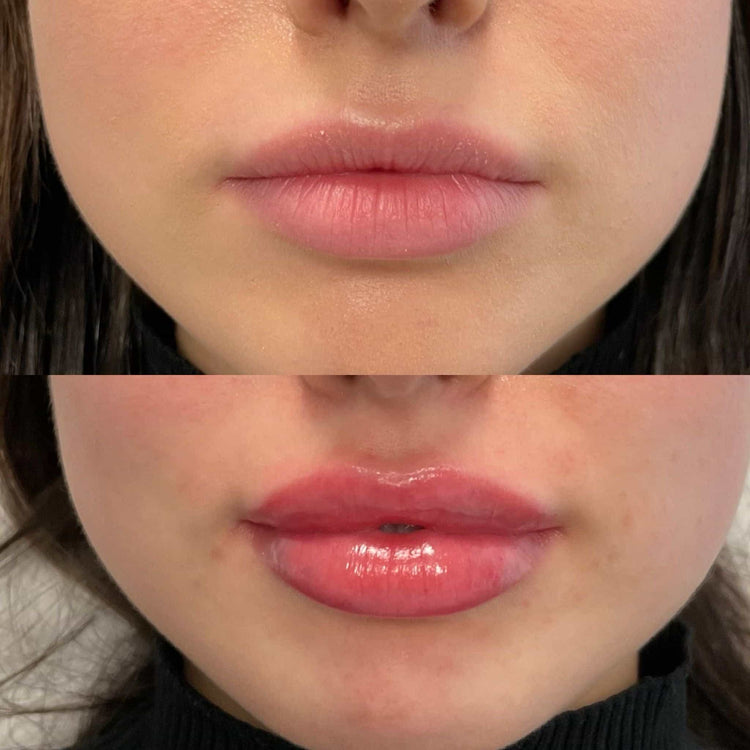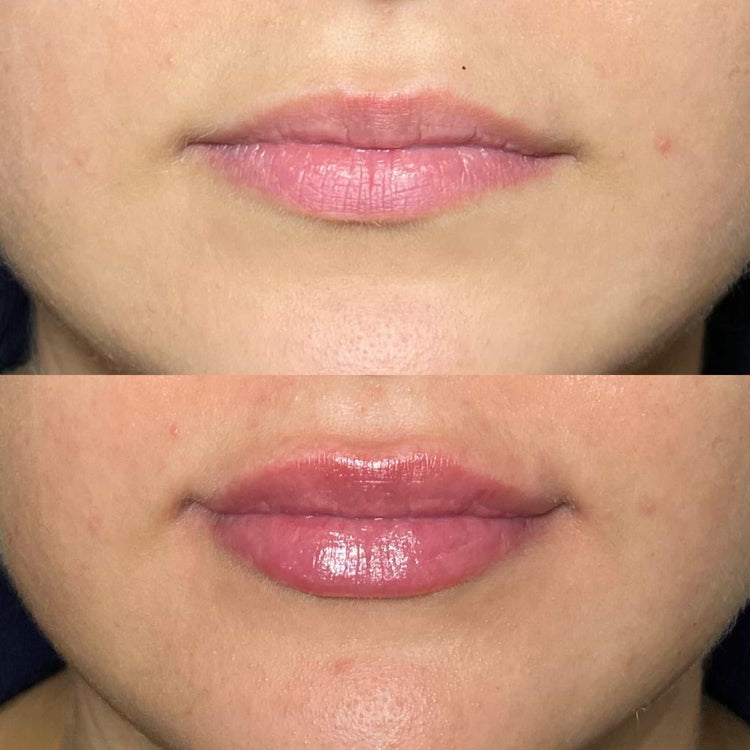Dermal Filler Longevity
Dermal fillers offer a popular solution for addressing wrinkles, adding volume, and enhancing facial contours. One common question among those considering fillers is how long their results will last. The longevity of dermal filler injections varies depending on several factors, including the type of filler used, individual metabolism, lifestyle choices, and the treated area.
Factors Affecting Dermal Filler Duration
Dermal filler longevity varies significantly depending on various factors. Hyaluronic acid fillers, the most common type, generally last 6 to 18 months. However, some newer hyaluronic acid formulations can provide longer-lasting results of up to two years. The location of the treatment also influences longevity. Fillers placed in areas with high muscle activity, like around the mouth and eyes, tend to break down faster than those injected into more stable areas like cheeks or jawline.
Individual metabolism plays a role as well; some people naturally metabolize filler quicker than others. Lifestyle factors such as sun exposure, smoking, and facial expressions can also impact filler longevity by breaking down the hyaluronic acid. Regular skincare routines with UV protection and minimizing smoking can help prolong the effects of dermal fillers.

Understanding these factors allows individuals to make informed decisions about filler treatments and manage their expectations for longevity.
Filler Type
Dermal fillers offer a popular solution for addressing wrinkles, adding volume, and enhancing facial contours. One common question among those considering fillers is how long their results will last. The longevity of dermal filler injections varies depending on several factors, including the type of filler used, individual metabolism, lifestyle choices, and the treated area.

Dermal filler longevity varies significantly depending on various factors. Hyaluronic acid fillers, the most common type, generally last 6 to 18 months. However, some newer hyaluronic acid formulations can provide longer-lasting results of up to two years. The location of the treatment also influences longevity. Fillers placed in areas with high muscle activity, like around the mouth and eyes, tend to break down faster than those injected into more stable areas like cheeks or jawline.
Individual metabolism plays a role as well; some people naturally metabolize filler quicker than others. Lifestyle factors such as sun exposure, smoking, and facial expressions can also impact filler longevity by breaking down the hyaluronic acid. Regular skincare routines with UV protection and minimizing smoking can help prolong the effects of dermal fillers.
Understanding these factors allows individuals to make informed decisions about filler treatments and manage their expectations for longevity.
Individual Metabolism
Dermal filler longevity varies significantly depending on various factors. Hyaluronic acid fillers, the most common type, generally last 6 to 18 months. However, some newer hyaluronic acid formulations can provide longer-lasting results of up to two years. The location of the treatment also influences longevity.
- Fillers placed in areas with high muscle activity, like around the mouth and eyes, tend to break down faster than those injected into more stable areas like cheeks or jawline.
Individual metabolism plays a role as well; some people naturally metabolize filler quicker than others. Lifestyle factors such as sun exposure, smoking, and facial expressions can also impact filler longevity by breaking down the hyaluronic acid. Regular skincare routines with UV protection and minimizing smoking can help prolong the effects of dermal fillers.
Injection Site
Dermal filler longevity varies significantly depending on various factors. Hyaluronic acid fillers, the most common type, generally last 6 to 18 months. Some newer hyaluronic acid formulations can provide longer-lasting results of up to two years.
The location of the treatment also influences longevity. Fillers placed in areas with high muscle activity, like around the mouth and eyes, tend to break down faster than those injected into more stable areas like cheeks or jawline.
Individual metabolism plays a role as well; some people naturally metabolize filler quicker than others. Lifestyle factors such as sun exposure, smoking, and facial expressions can also impact filler longevity by breaking down the hyaluronic acid. Regular skincare routines with UV protection and minimizing smoking can help prolong the effects of dermal fillers.
Lifestyle Factors
Dermal filler longevity varies significantly depending on various factors. Hyaluronic acid fillers, the most common type, generally last 6 to 18 months. However, some newer hyaluronic acid formulations can provide longer-lasting results of up to two years. The location of the treatment also influences longevity. Fillers placed in areas with high muscle activity, like around the mouth and eyes, tend to break down faster than those injected into more stable areas like cheeks or jawline.
Individual metabolism plays a role as well; some people naturally metabolize filler quicker than others. Lifestyle factors such as sun exposure, smoking, and facial expressions can also impact filler longevity by breaking down the hyaluronic acid. Regular skincare routines with UV protection and minimizing smoking can help prolong the effects of dermal fillers.
Maintenance Schedule
Dermal fillers have become a popular choice for enhancing facial features, smoothing wrinkles, and adding volume. However, a common concern is how long these results will last.
General Guidelines
Dermal filler longevity varies significantly depending on various factors. Hyaluronic acid fillers, the most common type, generally last 6 to 18 months. However, some newer hyaluronic acid formulations can provide longer-lasting results of up to two years.
The location of the treatment also influences longevity. Fillers placed in areas with high muscle activity, like around the mouth and eyes, tend to break down faster than those injected into more stable areas like cheeks or jawline.
Individual metabolism plays a role as well; some people naturally metabolize filler quicker than others. Lifestyle factors such as sun exposure, smoking, and facial expressions can also impact filler longevity by breaking down the hyaluronic acid. Regular skincare routines with UV protection and minimizing smoking can help prolong the effects of dermal fillers.
- Dermal fillers are a popular choice for enhancing facial features, smoothing wrinkles, and adding volume.
- Hyaluronic acid fillers, the most common type, generally last 6 to 18 months, but some newer formulations can provide longer-lasting results of up to two years.
- The location of the injection influences longevity; fillers in areas with high muscle activity (like around the mouth and eyes) tend to break down faster than those in more stable areas (like cheeks or jawline).
- Individual metabolism plays a role; some people naturally metabolize filler quicker.
- Lifestyle factors like sun exposure, smoking, and facial expressions can also impact longevity by breaking down the hyaluronic acid. Regular skincare routines with UV protection and minimizing smoking can help prolong results.
Frequency Based on Individual Needs
Dermal fillers have become a popular choice for enhancing facial features, smoothing wrinkles, and adding volume. However, a common concern is how long these results will last.
Dermal filler longevity varies significantly depending on various factors. Hyaluronic acid fillers, the most common type, generally last 6 to 18 months, but some newer formulations can provide longer-lasting results of up to two years.
The location of the injection influences longevity; fillers in areas with high muscle activity (like around the mouth and eyes) tend to break down faster than those in more stable areas (like cheeks or jawline).
Individual metabolism plays a role; some people naturally metabolize filler quicker.
Lifestyle factors like sun exposure, smoking, and facial expressions can also impact longevity by breaking down the hyaluronic acid. Regular skincare routines with UV protection and minimizing smoking can help prolong results.
Consultation with a Provider
Dermal fillers offer a popular solution for addressing wrinkles, adding volume, and enhancing facial contours. One common question among those considering fillers is how long their results will last.
Dermal filler longevity varies significantly depending on several factors, including the type of filler used, individual metabolism, lifestyle choices, and the treated area.
Hyaluronic acid fillers, the most common type, generally last 6 to 18 months. However, some newer hyaluronic acid formulations can provide longer-lasting results of up to two years.

The location of the treatment also influences longevity. Fillers placed in areas with high muscle activity, like around the mouth and eyes, tend to break down faster than those injected into more stable areas like cheeks or jawline.
Individual metabolism plays a role as well; some people naturally metabolize filler quicker than others. Lifestyle factors such as sun exposure, smoking, and facial expressions can also impact filler longevity by breaking down the hyaluronic acid.
Regular skincare routines with UV protection and minimizing smoking can help prolong the effects of dermal fillers.
Understanding these factors allows individuals to make informed decisions about filler treatments and manage their expectations for longevity.
Signs You May Need a Top-Up
Are you noticing your dermal filler results fading faster than expected? Perhaps your once plump lips are beginning to lose their volume, or the lines on your forehead seem more pronounced. These signs could indicate it’s time for a top-up treatment.
Fading or Loss of Volume
Here are some signs that you may need a dermal filler top-up:
- Noticeable decrease in volume: If your lips appear thinner, cheekbones seem less prominent, or areas previously filled no longer have their original plumpness, it’s likely time for a top-up.
- Restoring facial harmony: As fillers gradually degrade, facial contours may start to look unbalanced. If you notice asymmetry or an overall change in your facial structure, a top-up can help restore harmony.
- Receding results: Lines and wrinkles that were initially softened by filler may become more visible again as the filler breaks down. A top-up can re-establish smoother skin and minimize the appearance of these lines.
Asymmetry in Treatment Areas
Are you noticing your dermal filler results fading faster than expected? Perhaps your once plump lips are beginning to lose their volume, or the lines on your forehead seem more pronounced. These signs could indicate it’s time for a top-up treatment.
Here are some signs that you may need a dermal filler top-up:
- Noticeable decrease in volume: If your lips appear thinner, cheekbones seem less prominent, or areas previously filled no longer have their original plumpness, it’s likely time for a top-up.
- Restoring facial harmony: As fillers gradually degrade, facial contours may start to look unbalanced. If you notice asymmetry or an overall change in your facial structure, a top-up can help restore harmony.
- Receding results: Lines and wrinkles that were initially softened by filler may become more visible again as the filler breaks down. A top-up can re-establish smoother skin and minimize the appearance of these lines.
Fine Lines Reemerging
Are you noticing your dermal filler results fading faster than expected? Perhaps your once plump lips are beginning to lose their volume, or the lines on your forehead seem more pronounced. These signs could indicate it’s time for a top-up treatment.
Here are some signs that you may need a dermal filler top-up:
- Noticeable decrease in volume: If your lips appear thinner, cheekbones seem less prominent, or areas previously filled no longer have their original plumpness, it’s likely time for a top-up.
- Restoring facial harmony: As fillers gradually degrade, facial contours may start to look unbalanced. If you notice asymmetry or an overall change in your facial structure, a top-up can help restore harmony.
- Receding results: Lines and wrinkles that were initially softened by filler may become more visible again as the filler breaks down. A top-up can re-establish smoother skin and minimize the appearance of these lines.
Book your dermal filler consultation with Dr. Laura Geige at It’s Me & You Clinic
- Redensity 1 Skin Booster Treatments Near Pirbright, Surrey - November 3, 2025
- Redensity 1 Skin Booster Treatments Near Chessington, Surrey - November 2, 2025
- Profhilo Treatment Near Tandridge, Surrey - October 31, 2025
